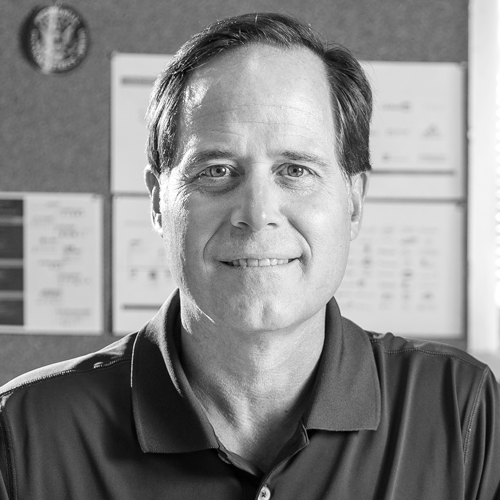While his childhood classmates were improving their athletic skills during summer vacation, Adam Gold was at computer camp. His interest in computers developed at an early age, and that passion steered him toward his career path before many of his peers.
“During the summer, I would basically sit in a trailer and learn how to program on an Apple IIe in Logo, which was kind of visual basic at the time,” Gold says. “My parents were at a level where we weren’t rich, but were able to afford a computer every few years. So, I had my Timex Sinclair and IBM PCjr and really just got hooked.”
Gold’s decision to bypass sports camp and learn about computers paid off for him in the long run. He is now the director of infrastructure technology at University of California (UC) Irvine Health and is the interim chief technology officer of UC San Diego Health. He oversees the technology side of the house: server infrastructure, telecommunications, desktop engineering, storage, networks, and some out-of-the box development.
He started as a contractor at UC Irvine to work on the university’s Y2K project, replacing and upgrading PCs and installing new software. Then, he received a permanent position as an entry-level desktop technician before he accepted the CIO’s invitation to join him at Micro General, where Gold picked up valuable exposure to web-based programs like ASP and SQL.
“Because I was tinkering with it, I also got thrown into this pseudo-server admin role, where I was being asked to manage servers used for production and development that were based out of Chicago,” Gold says.
A few years later, he had the opportunity to work with First American Title in the command center, managing and overseeing nearly 800 servers. This was during the big escrow boom, which elevated the necessity of the platform. Gold helped build this command center, and that experience came in handy when he returned to UC Irvine Health in 2003 to manage its server team.
“Being able to say you’ve been there and you’ve done that really does help a lot in this industry.”
Since then, Gold has also expanded his focus to client services along with emerging technologies to implement in the organization and hospital. His responsibilities for the server and desktop teams, clients, and a variety of other projects—combined with changes within the organization during the last few years—led to Gold eventually overseeing the technology side of the house.
“The experience is invaluable,” Gold says. “There are some leaders you work with where you can tell they’ve never been in the role they are speaking to. For me, I can confidently say I understand what it takes most of the time when we’re talking about implementations, initiatives, user adoption, or just general support. Being able to say you’ve been there and you’ve done that really does help a lot in this industry.”
Credibility will be a key quality in Gold’s arsenal as he’s helping UC Irvine Health’s conversion to the Epic EMR system. UC Irvine Health had implemented the Allscripts EMR system seven years previously, but leadership decided to make the switch. After a period of due diligence, UC Irvine Health decided to partner with UC San Diego Health via a community-connect model.
“On the San Diego side, they have been running Epic for upwards of ten years now,” he says. “They are very well-versed in Epic, and they’ve gone through upgrades. Now, we’re going through this transformation, moving to Epic, and collaborating with UC San Diego to not reinvent the wheel, but as an opportunity that if anything needed to change within the environment, now is a good time to do it.”
Going forward, the hope is that the implementation of Epic at UC Irvine Health will help streamline processes. Between Irvine and San Diego campuses, there are currently just fewer than 3,000 servers (physical and virtual), and thousands of databases and applications with different vendors that all have various requirements of operating systems and network connectivity needs.
To combat this fragmentation, Gold believes UC Irvine Health will end up going with a hybrid approach. The organization will have a local presence at the Irvine and San Diego data centers for the systems that require it, and it will also have a second, virtual-hosted model where the organization would shift its workloads to the cloud and out of the data center.
“You’re looking at, basically, a multitiered approach depending on the needs of the system and the needs of the user, the requirements of the application, etc.,” he says. “Our goal is to get out of the data center business. There is a lot of overhead. It’s a lot of time and support invested. With all the other initiatives we’re working on, data centers are one thing we just do not want to have to worry about.”

